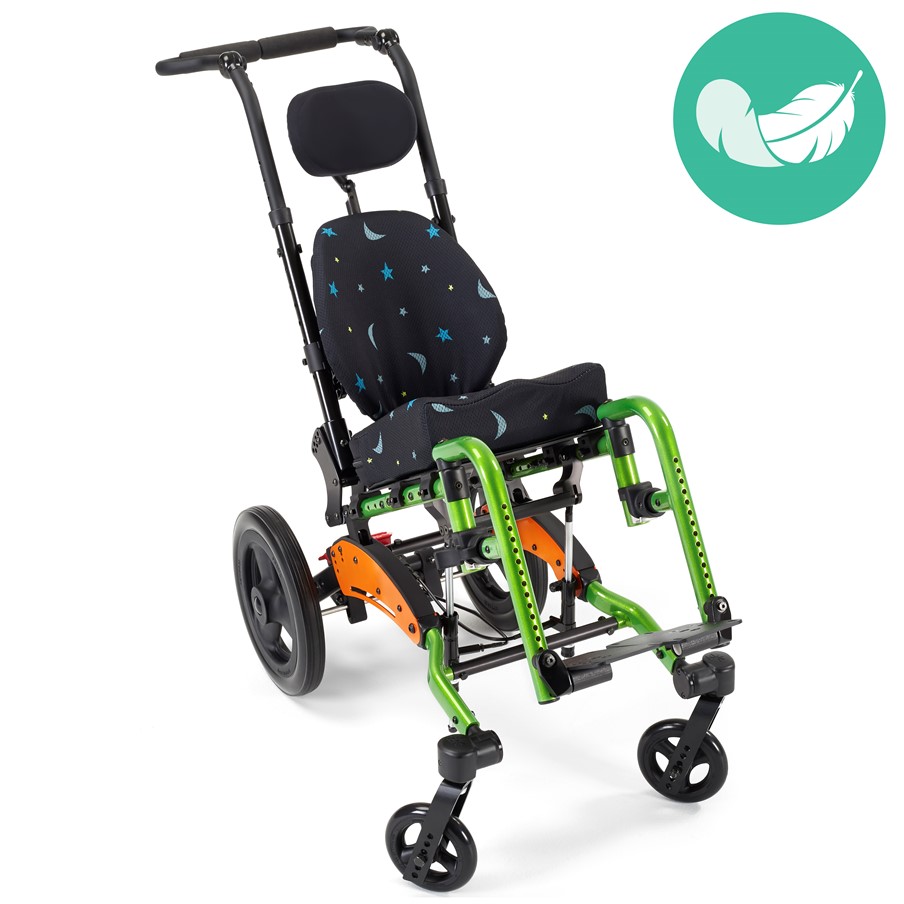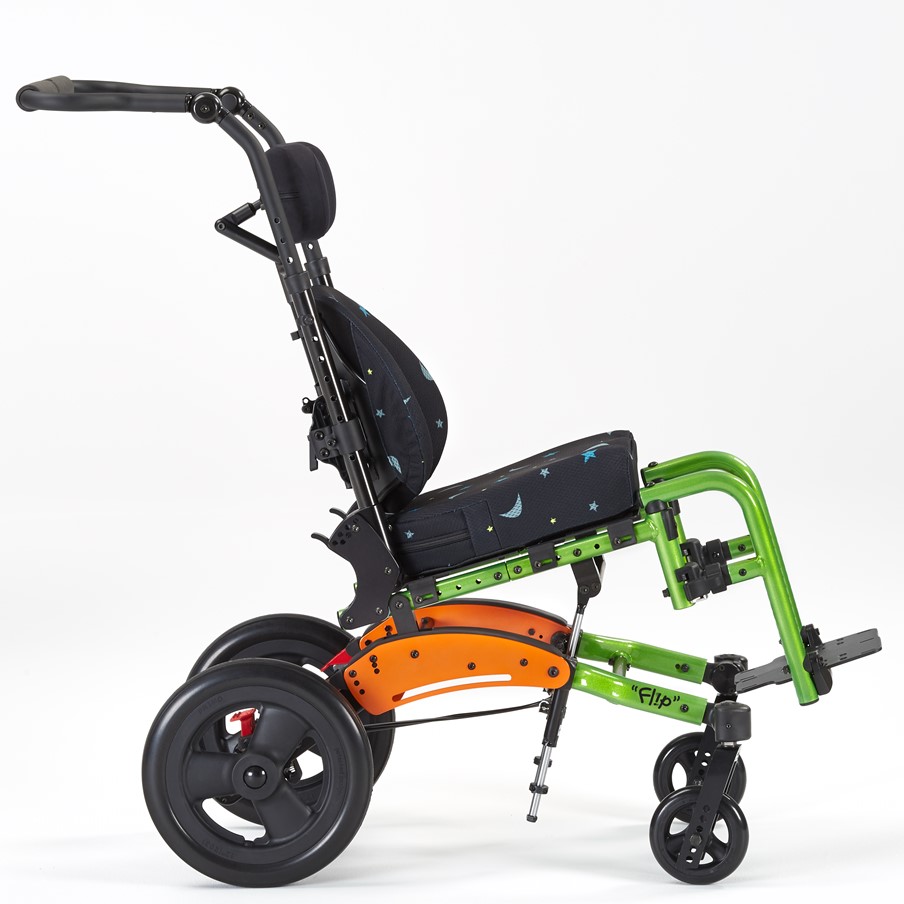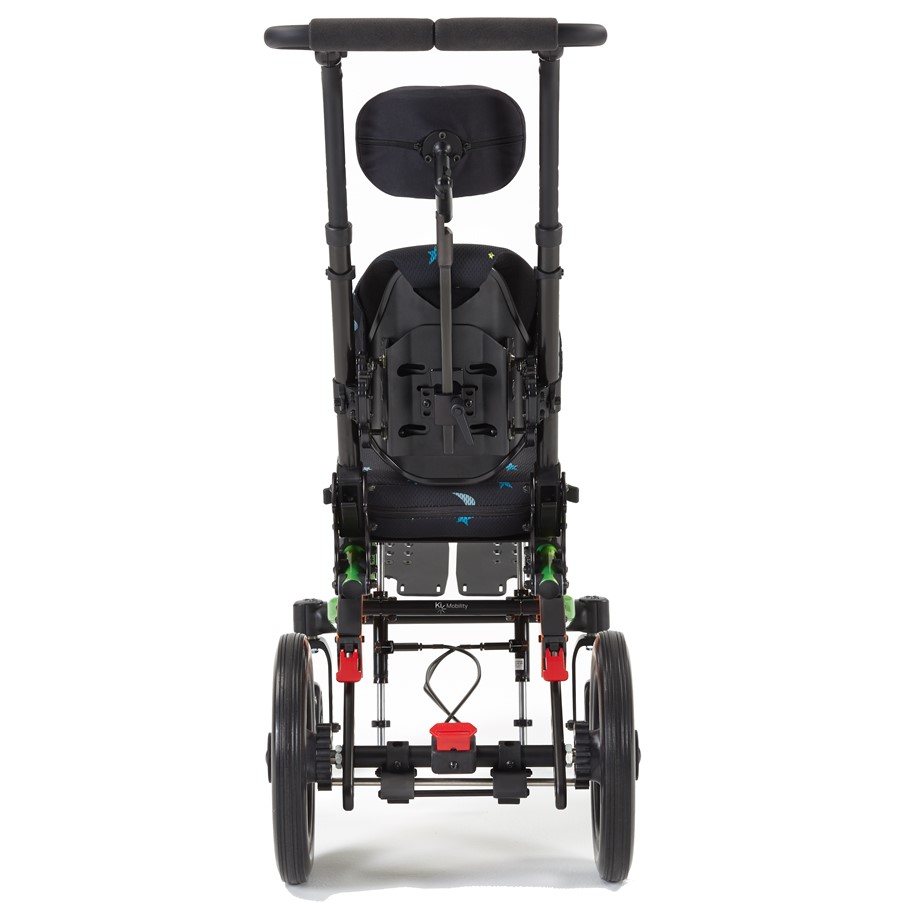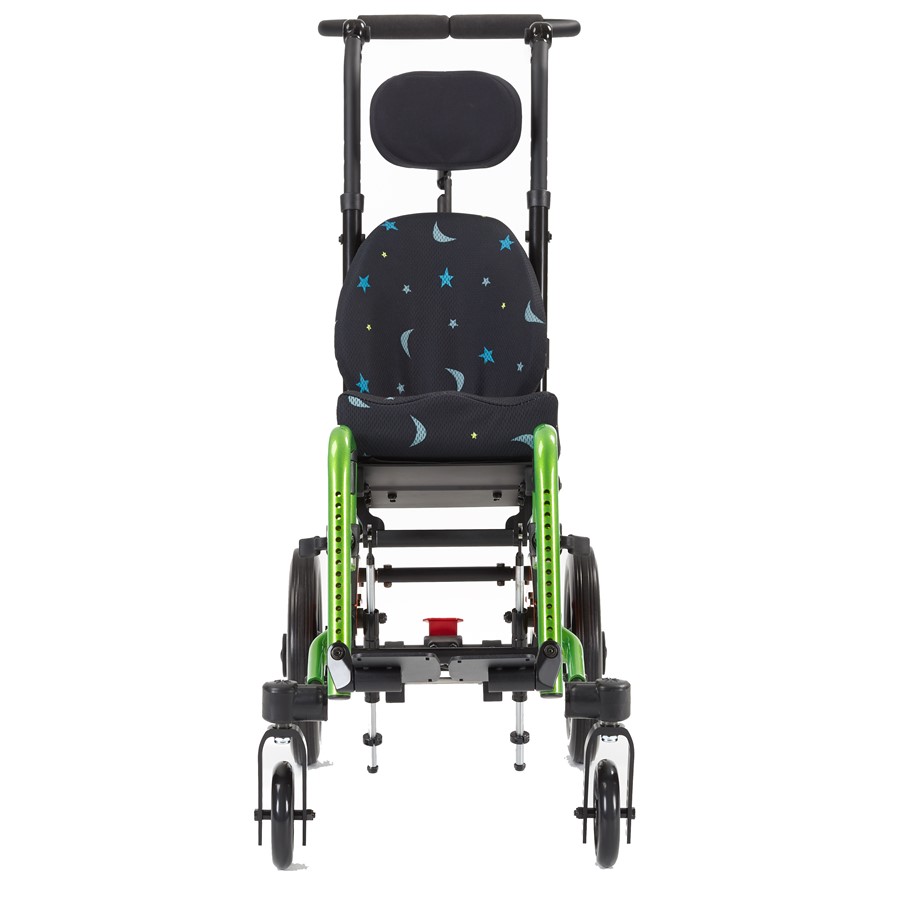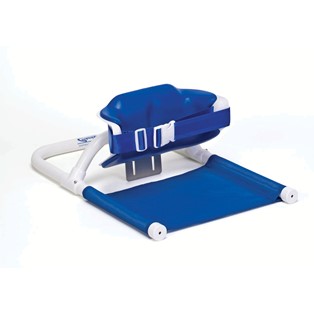Ki Mobility Ultra-Lightweight Little Wave Flip XP
The Ki Mobility Flip XP is a wheelchair designed to be as unique as your child. It is designed for the smallest of riders with some of the biggest advancements in the industry. From its flat folding design to its use of Taper Lok Technology, the Flip is simply the most advanced paediatric tilt-in-space available today.
This product is not available in your selected combination
Product Code: {{stockCode}}
Please note the selected product option is not available for trial.
Each chair is manufactured and customised to fit each individual.
Features
- Integrates design elements from strollers into the durability of a wheelchair
- Over 500 colour combinations to choose from
- Designer spoke guards to personalise
- Coloured wheel options
- Seat height, seat depth, and seat width have never been so easy to change
- Hands-free attendant wheel lock
- Height adjustable T-arm
- Flip-up anti tips
- The Ergo Folding Back is tough, strong and easy to fold
- High pivot folding back allowing for added seating to remain on the chair while folded
- Unique option of true braking system
- The Self-Propel Axle option of 20, 22 and 24 inch wheels allow you to achieve balance between wheel access and tilt range
- Multi-customisable options - refer to script for full details
Ki Mobility Resources:
Ki Mobility Colour Visualiser
Ki Mobility Serial Number Look Up
Ki Parts Look Up
| Seat Widths | 10" to 18" |
| Seat Depths | 12" to 20" |
| Folding Frame | Yes |
| Tilt-in-Space | Yes |
| Recline | No |
| Minimum Seat to Floor Height | 13" |
| Standard Leg Rest Style | Angle adjustable, Composite material |
| User Weight Limit | 75 kg |
| Transport Weight | 9.53 kg (14”x14” Frame with Attendant Wheel Locks. Armrests, Rear Wheels and Footrests Removed) |
| Seating | Slung upholstery |
| Armrests | Height adjustable T-Arm, Paediatric Desk, Locking extendable flip up |
| Brakes | Push to lock, Pull to lock, Attendant foot lock, Drum brake |
| Rear Wheel Size | 12" - 24" |
| Castor Size | 5" - 8" |
What needs to be considered when selecting a standing frame for a child?
Standing frames are designed for children who are spending most of their days in a wheelchair or buggie and assist in fulfilling their mobility and standing needs. Your child’s therapist will work with you to determine what your child needs and what the goals will be for them when using a standing frame.
Some things that you might like to consider are:
- How easy is it for my child to transfer into it?
- What position will work best for them – to be on their front (prone), on their back (supine), upright or a combination of these?
- Can the angle easily be adjusted when they are in it?
- How much growth is there for them?
- Is it able to be transported so we can bring it home from school in the weekends and/or holidays?
There are several main types of Standers:
- Dynamic/Multi-position – enables children with conditions such as cerebral palsy and muscular dystrophy, who are unable to stand and walk independently, to come into a safely supported upright position. They are able to switch from supine to prone or upright standing very quickly – without using any tools. They allow the child to be at eye level with their peers, helping to facilitate social interactions.
- Prone Standers – these are mobile standers (generally with four castors) that support the child at the front and offer a continuous range of angles so that the best position for the child can be achieved. They encourage weight-bearing and assist children in gaining the ability to stand.
- Supine Standers – also mobile, these standers work well for children who don’t have the strength or ability to lift or control their head and shoulders. This style allows for partial weight bearing and helps the child develop better control of their head, trunk, pelvis, knees and feet. It also leaves the child’s hands free to access items on a tray or table in front of them.
- Vertical standers – like the name indicates, holds the child upright. It is suited to children who are not confident on their feet or are developing lateral weight shifting skills. These work well to develop trunk strength and also promote independent, upright standing.
Why is standing important?
There are lots of ways that children with disabilities benefit from standing including the following:
- increases bone density and reduces the risk of fractures
- stretches muscles, preventing the onset of contractures
- improves respiration and voice control
- enhances circulation and blood pressure
- aids digestion, bowel function and bladder drainage
- facilitates the formation of the hip joint in early development
- improves skin integrity by relieving pressure encountered during sitting
- improves wellbeing, alertness and sleep patterns
My child needs more support when toileting - what are the options?
Essentially there are two different types of toileting options for children with disabilities – either stand alone commode style toileting systems or ones that can be attached to a regular toilet.
The commode style is generally easy to move and can be easier for children to transfer on and off. Many of these can also be used as a shower chair and are really easy for carers to use. They can be placed over the toilet or a removable commode bucket can be used.
Toilet support systems attach easily to a regular toilet. They are adjustable, secure and provide good positioning while the child is using the toilet. They help encourage independence and as many have padded seat options, ensure that the child is comfortable especially if it takes longer than usual.
Can we trial the wheelchairs shown on this website?
Yes - all that is needed is a trial request to come through from a therapist to start the process. Once the trial request has been received, with the specifications required, we will send the wheelchair out to the therapist ready to trial for at least one week.
Can we trial other pieces of equipment shown on this website?
Yes - all we need is a trial request to come through from a therapist that you are working with. Once we have this and the specifications you require, we will send the equipment out to the therapist and they will have it for you to trial for at least one week.
Any of the Toileting or Bathing items are issued for trial on the basis of "Dry Trial". This means that the item can be set up on the toilet or in the bath but not actually used with water. Many people use our trial equipment and we need to ensure that it stays in a clean and safe condition.
There are lots of wheelchair and buggie options – where do I start?
Good question – and one that we know your child’s therapist will help you with. However, we know that lots of parents and carers like to do their homework, so here are a few things to consider when looking at mobility options for your child:
How much support do they offer? Seating supports are often incorporated into buggies and wheelchairs to ensure that kids have good postural support and are also really comfortable.
Rear facing or front facing? Like regular buggies, it is good to have the option for your child to be facing you, which allows you to keep a close eye on them.
What is the overall size? The actually width of the buggie or wheelchair is important as you want it to easily fit through doors and let you go to the places that are part of your life.
How much do they weigh? Depending on the age of your child, it is likely that you will be transferring them into a car seat when you go out and will need to lift it into your vehicle. Looking after your body is really important too.
How easily do they fold up? How small do they go? Think about the space you have in your vehicle and also that you made need to do this several times a day – and in the pouring rain sometimes too!
Is there a storage compartment? A small thing that makes a big difference – a place to put spare clothes, food and nappies is important. If a storage compartment or bag is not standard, then check to see if there is an easy way for a baby bag to be attached.
What are the options if I need to also transport other children? Some buggies have the option of adding on a buggie board that older children can stand on, while others have the option of having mounting brackets added for a baby capsule. If this is something that you will need, make sure you discuss the options with your therapist.
And of course, kids grow so you need to consider one that has a good amount of growth incorporated in it – it’s better to start with one that is a little on the large side, than one that is a little snug. It’s quite the process to get equipment funded so you ideally want it to last as long as possible.
Once we decide upon the wheelchair our child is going to use, how long will we need to wait until we receive it?
Once the funding comes through, standard wheelchairs like the Karma Flexx Junior Paediatric wheelchair is generally held in stock and delivery to the therapist will be within 2 - 3 days. If the wheelchair is going to be custom made, it might take up to six weeks from the time we receive the order from the funder until it is delivered to the therapist.
